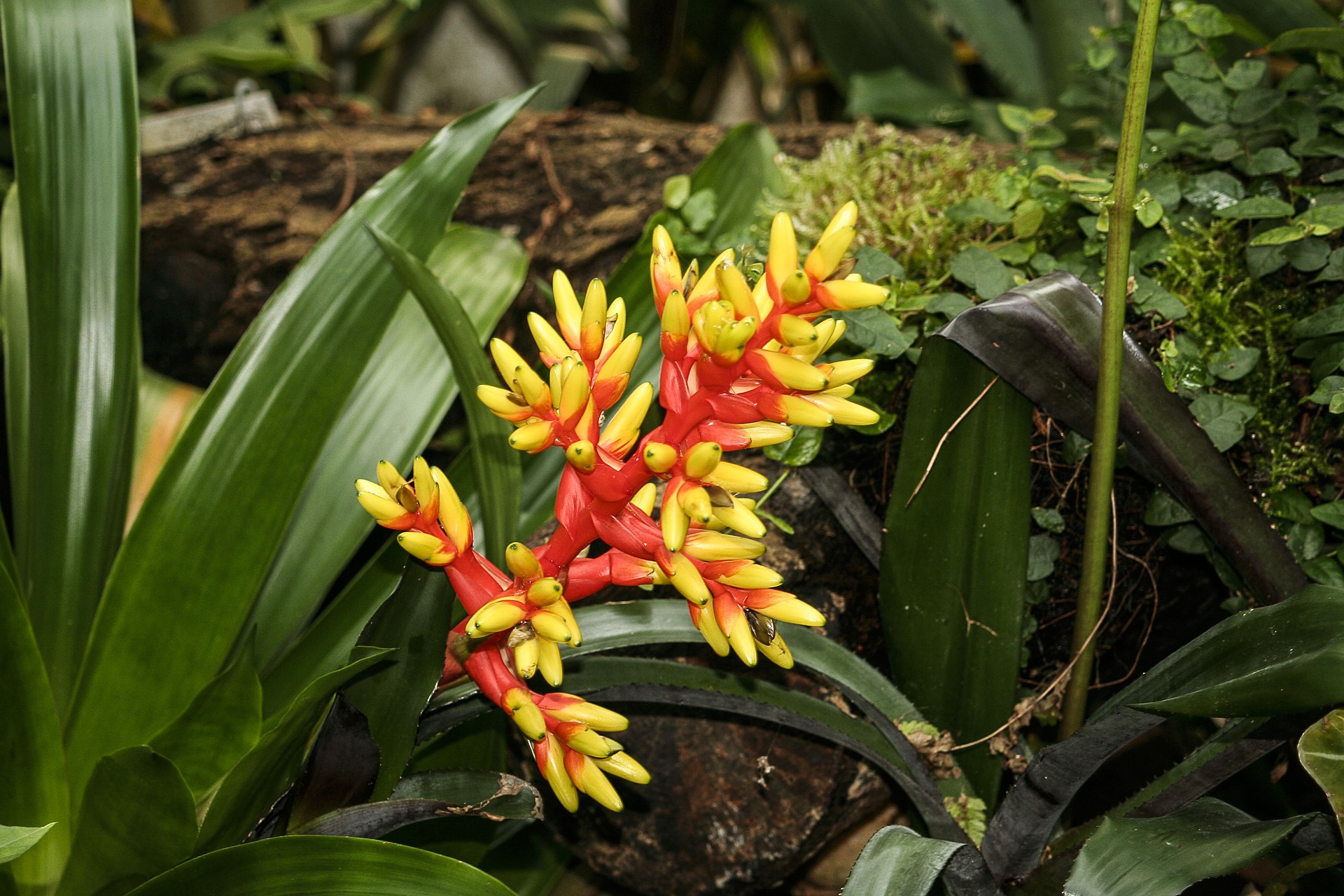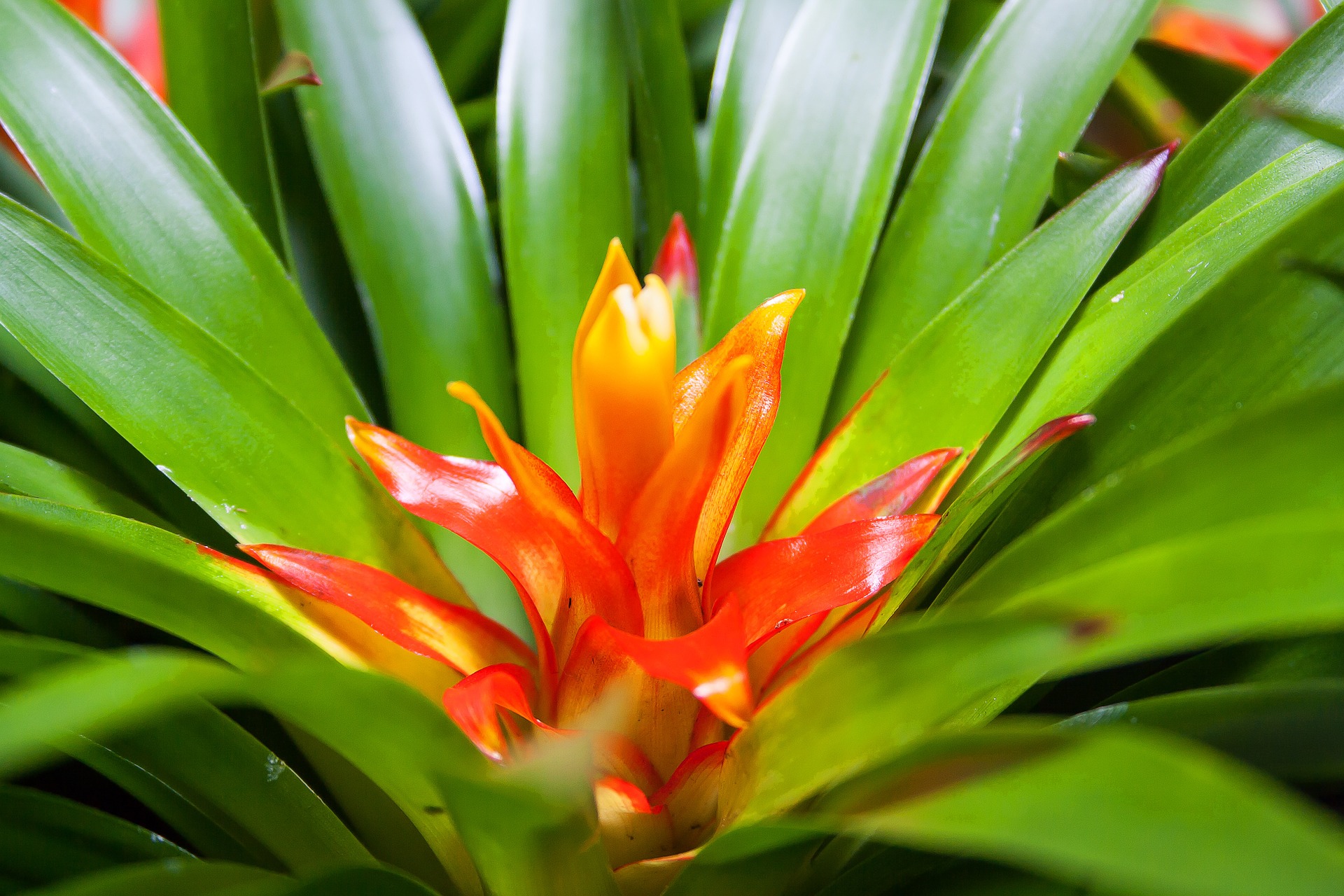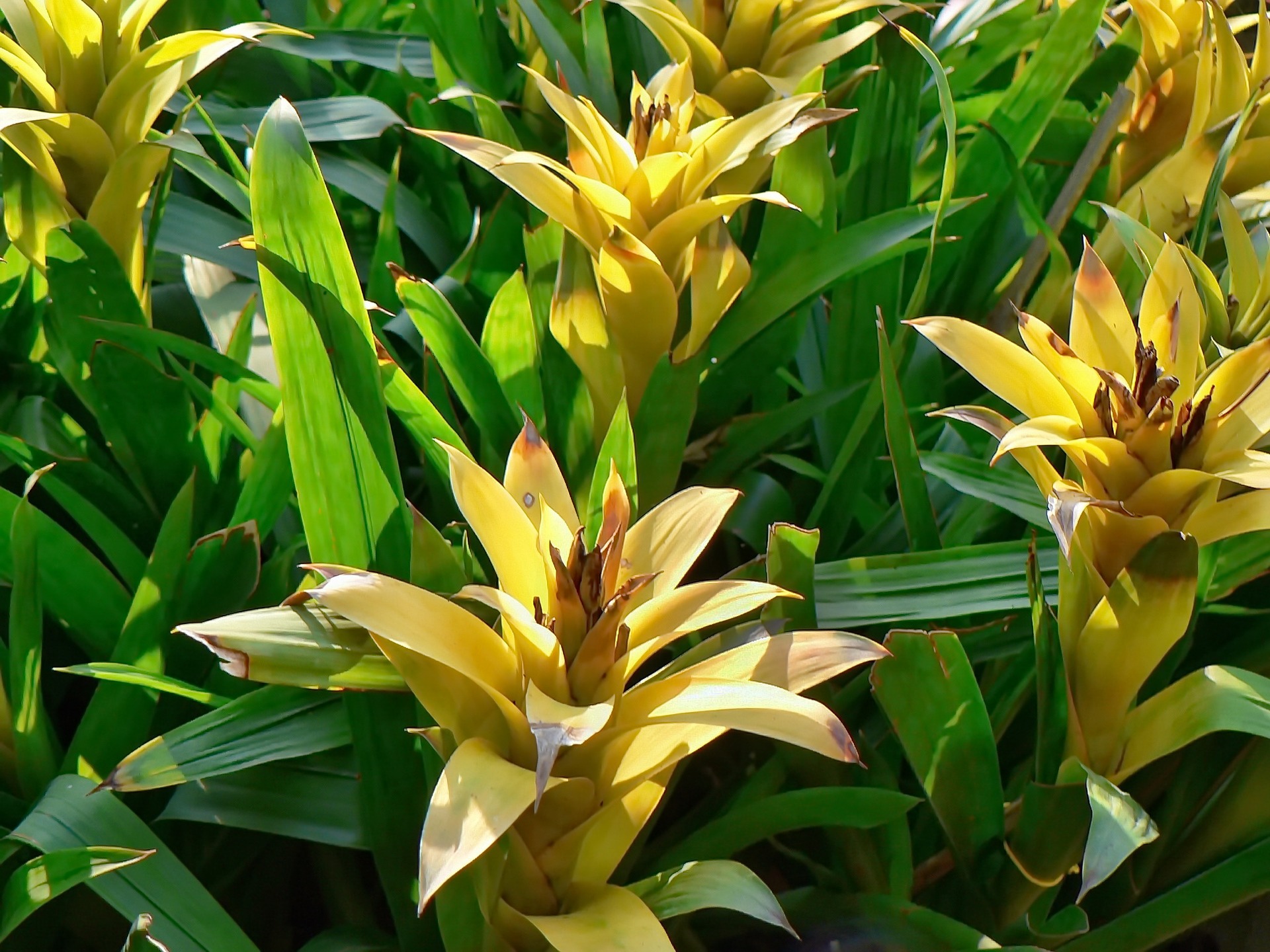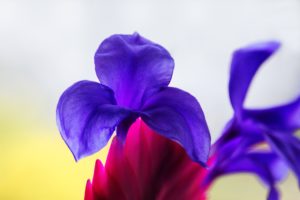Whether you’ve heard the name or not, chances are you’ve experienced the bold beauty of the bromeliad – with glossy, strappy leaves and neon inflorescence rising from the center. They offer a unique, bold aesthetic with bright color and personality, and lucky for us, unlike most of the country, they are right at home here in Fort Lauderdale.
Where to Plant Bromeliads
Bromeliads are a family with over 2700 species spanning from our southern Florida forests to Chile. They are natively found clustered on the crowded tree branches; however, they are just as at-home growing in our gardenscapes and containers. As natives to our climate, all they need is the right location and occasional drink of water to keep them happy, making them a perfect low-maintenance choice.
Naturally making their home in the shade of the canopy, most bromeliads are happiest in bright shade. While some varieties may enjoy full sun, which can even brighten their colors, most cannot tolerate bright light, which will burn their leaves. Instead, opt for a spot with dappled sunlight, like under a tree, or where they are sheltered just enough to still receive bright indirect light. Be sure to check the tag, though, just in case you have brought a sun-lover home.
When it comes to soil, bromeliads have very little by means of roots and aren’t very picky about their growing medium. However, despite being plants that like plenty of humidity, they are extremely drought-tolerant and prefer having dry roots to wet ones. To prevent waterlogging, choose good, well-draining soil to start with.

How to Care for Bromeliads
For most of our plants, we take great care to ensure we are watering the soil and not the foliage, nourishing the roots rather than rotting the leaves. With bromeliads, you’ll want to do the exact opposite.
Rather than taking in water and nutrients through their roots, bromeliads absorb them through uniquely adapted pores on their leaves. To water, pour directly into the central cup of the plant, allowing the water to overflow to keep the soil slightly moist, but not soggy. When it comes time to water again, always pour in just enough to flush the old water from the cup, which may be playing host to mosquito eggs.

Caring for Bromeliads After Blooming
The bright central spike of the bromeliad will usually hold its color for 2-4 months once it has bloomed. Once that inflorescence fades, though, it won’t bloom again. Instead, the plant will grow pups at its base. These pups will continue growing from the sides and will bloom themselves in a couple of years.
These pups can be left on the mother plant to rebloom. However, they can also be removed and planted on their own. Once a pup is about ⅓ – ½ the size of the mother plant, carefully cut at the base and plant on its own.

With some of the most intriguing and interesting aesthetics to be had in our gardens, bromeliads are a captivating way to add color and texture to our yards. Their luscious, tropical appeal and low-maintenance nature helps turn our backyards into an oasis without the extra care, so we can bask in relaxation, rather than wading in added upkeep.

